Alexander Hamilton's Second Tariff Act creates the United States Coast Guard "Be it further enacted, That the President of the United States be empowered to cause to be built and equipped, so many boats or cutters, not exceeding ten, as may be necessary to be employed for the protection of the revenue..." (New York): Printed by Francis Childs and John Swaine (1790). First edition. Folio, 13 1/2 x 8 1/2 in. (343 x 216mm). 41, (1) pp. Printed document, being: "Congress of the United States: at the second session, Begun and held at the City of New-York, on Monday, the Fourth of January, one thousand seven hundred and ninety" Disbound; all edges untrimmed; scattered soiling along edges; scattered spotting to text. Evans 22970 Lot includes a MS. document in a secretarial hand, signed by Assistant Secretary of the Treasury Tench Coxe, being an official copy of a decision by Hamilton in response to a petition filed by traders James Maxwell and Dunken Kelly in the case, the United States vs. Three Hogsheads of Rum, regarding the seizing of their rum at the port of New York; dated November 8, 1791. A letter, also dated November 8, 1791, from Rhode Island judge Henry Marchant to Hamilton writes Dunken Kelly's the name as Dunken "Thelley." Creasing from original folds, first page separated along fold, other separations along folds. In 1789, Congress passed the first Tariff Act, to both protect developing manufacturing industries at home as well as raise revenue sorely needed by the new federal government, by levying a five percent rate on all foreign goods arriving at U.S. ports. By 1790, Secretary of the Treasury Alexander Hamilton, calculating that the government needed close to $3 million to cover operating costs, and even more to pay down foreign and domestic debts, realized that this rate was too low and sought to raise it closer to ten percent. In order to successfully collect these tariffs against smuggling, Hamilton proposed commissioning a fleet of vessels, called revenue cutters, to patrol the coast and offshore waters of the country in order to intercept contraband and ships looking to avoid the tariff. Page 37 of this act outlines this proposal, and the creation of what would come to be called the Coast Guard (the oldest continuous seagoing service of the United States and eventually the fifth branch of the armed services). It details, among other things, the number of ships to be commissioned, the appointment of Masters and officers, their salaries, as well as their duties, stating that they, "shall have power and authority to go on board every ship or vessel which shall arrive within the United States, or within four leagues of the coast thereof, if bound for the United States, and to search and examine the same and every part thereof, and to demand, receive and certify the manifests herein before required to be on board of certain ships or vessels..." Hamilton was intimately involved with the creation and functioning of this unit. As Ron Chernow observes, "Hamilton advised Washington to avoid regional favoritism by constructing the first ten revenue cutters in 'different parts of the Union.' Previewing his upcoming industrial policy, he recommended using homegrown cloth for sails rather than foreign fabrics. Once again, an instinct for executive leadership, an innate capacity to command, surfaced in Hamilton. He issued directives of breathtaking specificity, requiring each cutter possess ten muskets and bayonets, twenty pistols, two chisels, one broadax, and two lanterns..." He even went as far as managing the proper conduct of the Masters and crew aboard these ships, advising them to act with the strictest professionalism and conduct so as to avoid turning the public against the institution. Today Hamilton is recognized as the "Father" of the United States Coast Guard. A fine example.
Alexander Hamilton's Second Tariff Act creates the United States Coast Guard "Be it further enacted, That the President of the United States be empowered to cause to be built and equipped, so many boats or cutters, not exceeding ten, as may be necessary to be employed for the protection of the revenue..." (New York): Printed by Francis Childs and John Swaine (1790). First edition. Folio, 13 1/2 x 8 1/2 in. (343 x 216mm). 41, (1) pp. Printed document, being: "Congress of the United States: at the second session, Begun and held at the City of New-York, on Monday, the Fourth of January, one thousand seven hundred and ninety" Disbound; all edges untrimmed; scattered soiling along edges; scattered spotting to text. Evans 22970 Lot includes a MS. document in a secretarial hand, signed by Assistant Secretary of the Treasury Tench Coxe, being an official copy of a decision by Hamilton in response to a petition filed by traders James Maxwell and Dunken Kelly in the case, the United States vs. Three Hogsheads of Rum, regarding the seizing of their rum at the port of New York; dated November 8, 1791. A letter, also dated November 8, 1791, from Rhode Island judge Henry Marchant to Hamilton writes Dunken Kelly's the name as Dunken "Thelley." Creasing from original folds, first page separated along fold, other separations along folds. In 1789, Congress passed the first Tariff Act, to both protect developing manufacturing industries at home as well as raise revenue sorely needed by the new federal government, by levying a five percent rate on all foreign goods arriving at U.S. ports. By 1790, Secretary of the Treasury Alexander Hamilton, calculating that the government needed close to $3 million to cover operating costs, and even more to pay down foreign and domestic debts, realized that this rate was too low and sought to raise it closer to ten percent. In order to successfully collect these tariffs against smuggling, Hamilton proposed commissioning a fleet of vessels, called revenue cutters, to patrol the coast and offshore waters of the country in order to intercept contraband and ships looking to avoid the tariff. Page 37 of this act outlines this proposal, and the creation of what would come to be called the Coast Guard (the oldest continuous seagoing service of the United States and eventually the fifth branch of the armed services). It details, among other things, the number of ships to be commissioned, the appointment of Masters and officers, their salaries, as well as their duties, stating that they, "shall have power and authority to go on board every ship or vessel which shall arrive within the United States, or within four leagues of the coast thereof, if bound for the United States, and to search and examine the same and every part thereof, and to demand, receive and certify the manifests herein before required to be on board of certain ships or vessels..." Hamilton was intimately involved with the creation and functioning of this unit. As Ron Chernow observes, "Hamilton advised Washington to avoid regional favoritism by constructing the first ten revenue cutters in 'different parts of the Union.' Previewing his upcoming industrial policy, he recommended using homegrown cloth for sails rather than foreign fabrics. Once again, an instinct for executive leadership, an innate capacity to command, surfaced in Hamilton. He issued directives of breathtaking specificity, requiring each cutter possess ten muskets and bayonets, twenty pistols, two chisels, one broadax, and two lanterns..." He even went as far as managing the proper conduct of the Masters and crew aboard these ships, advising them to act with the strictest professionalism and conduct so as to avoid turning the public against the institution. Today Hamilton is recognized as the "Father" of the United States Coast Guard. A fine example.
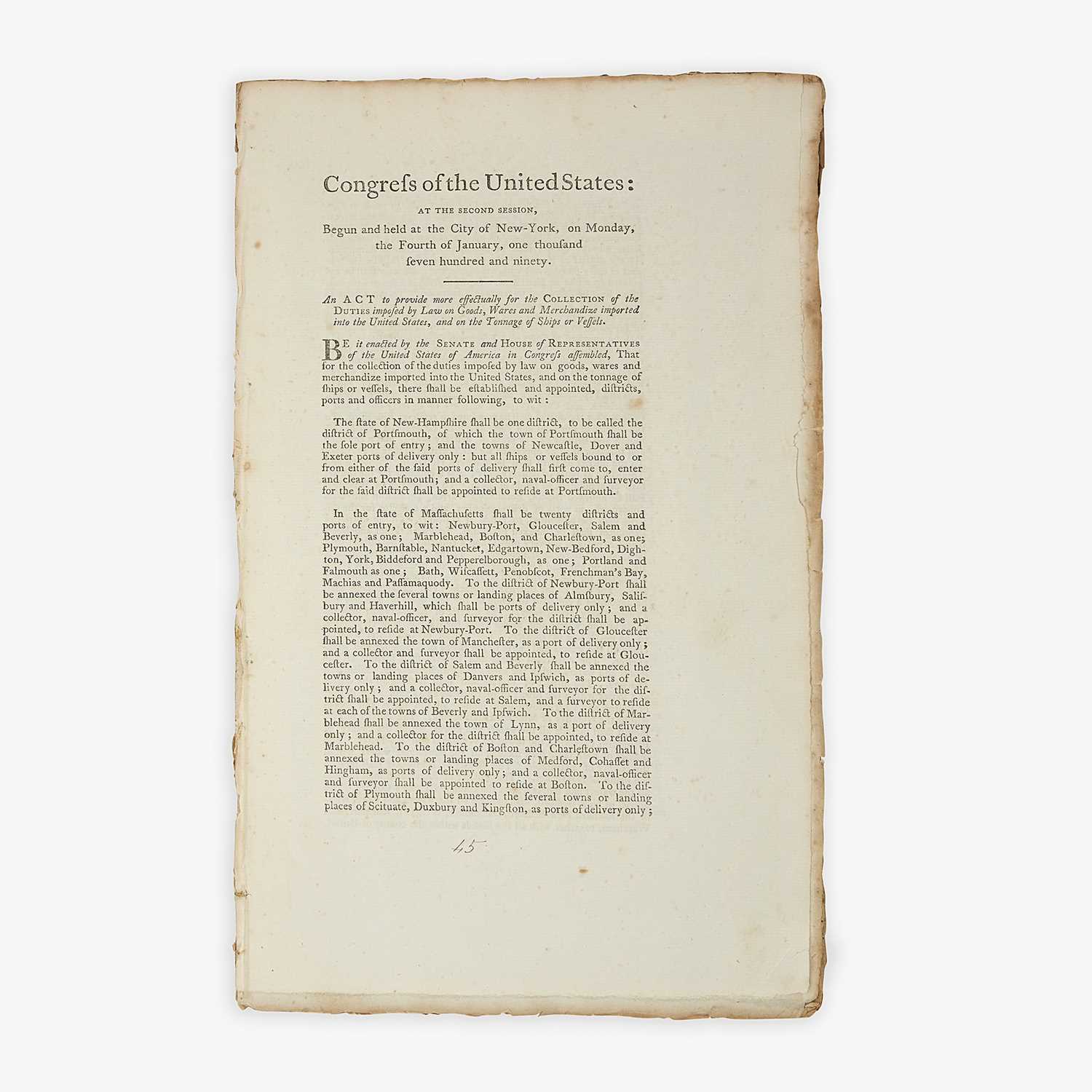
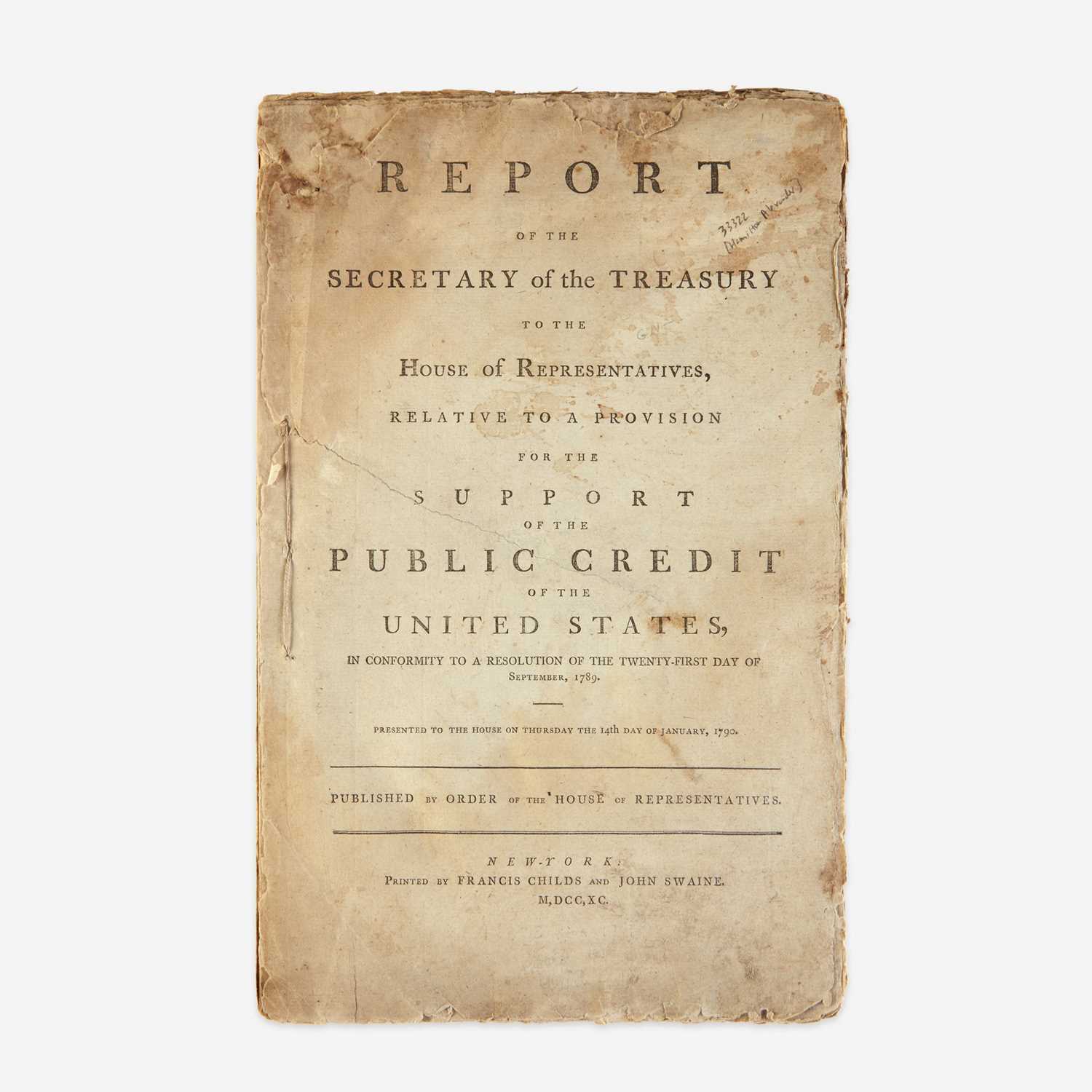
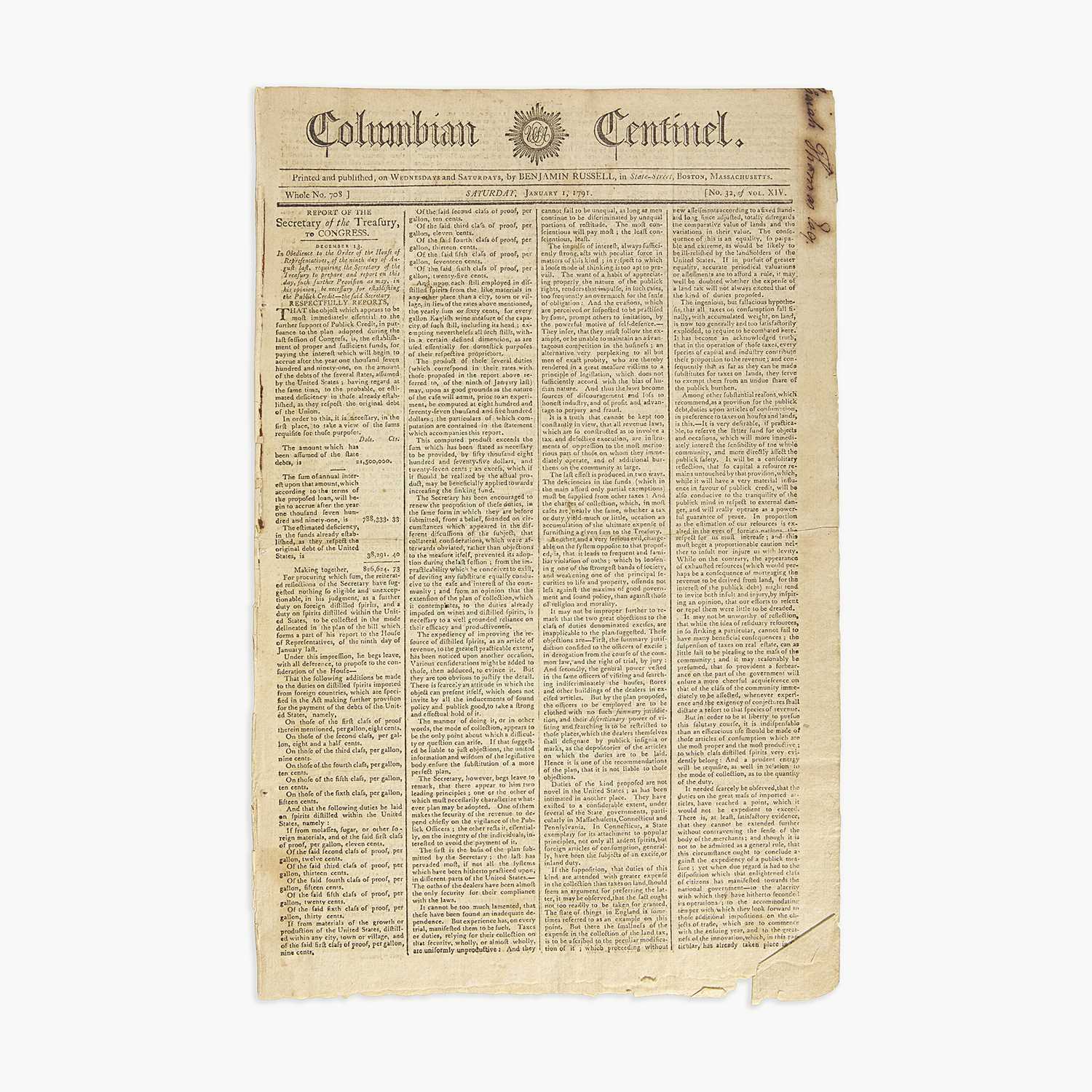
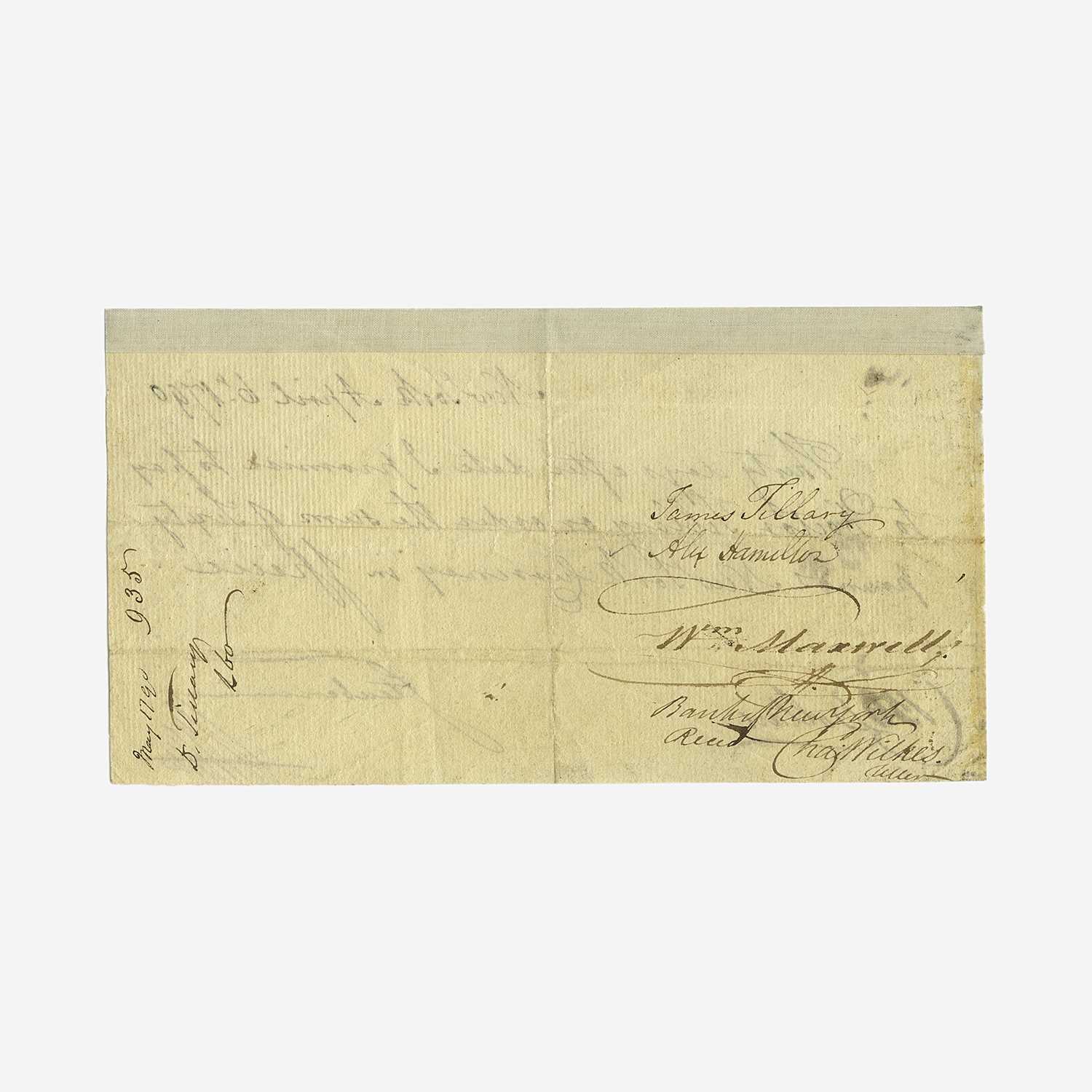
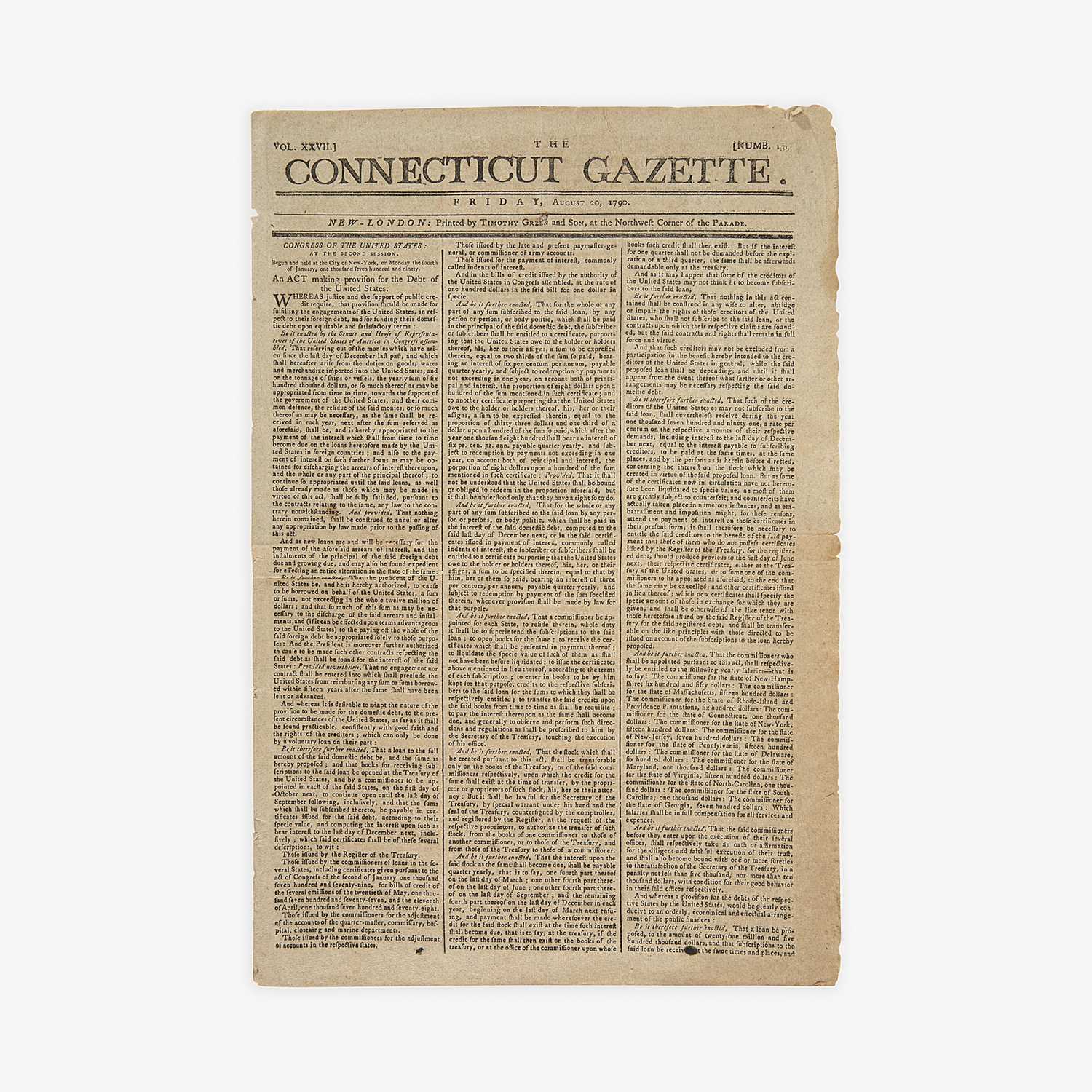
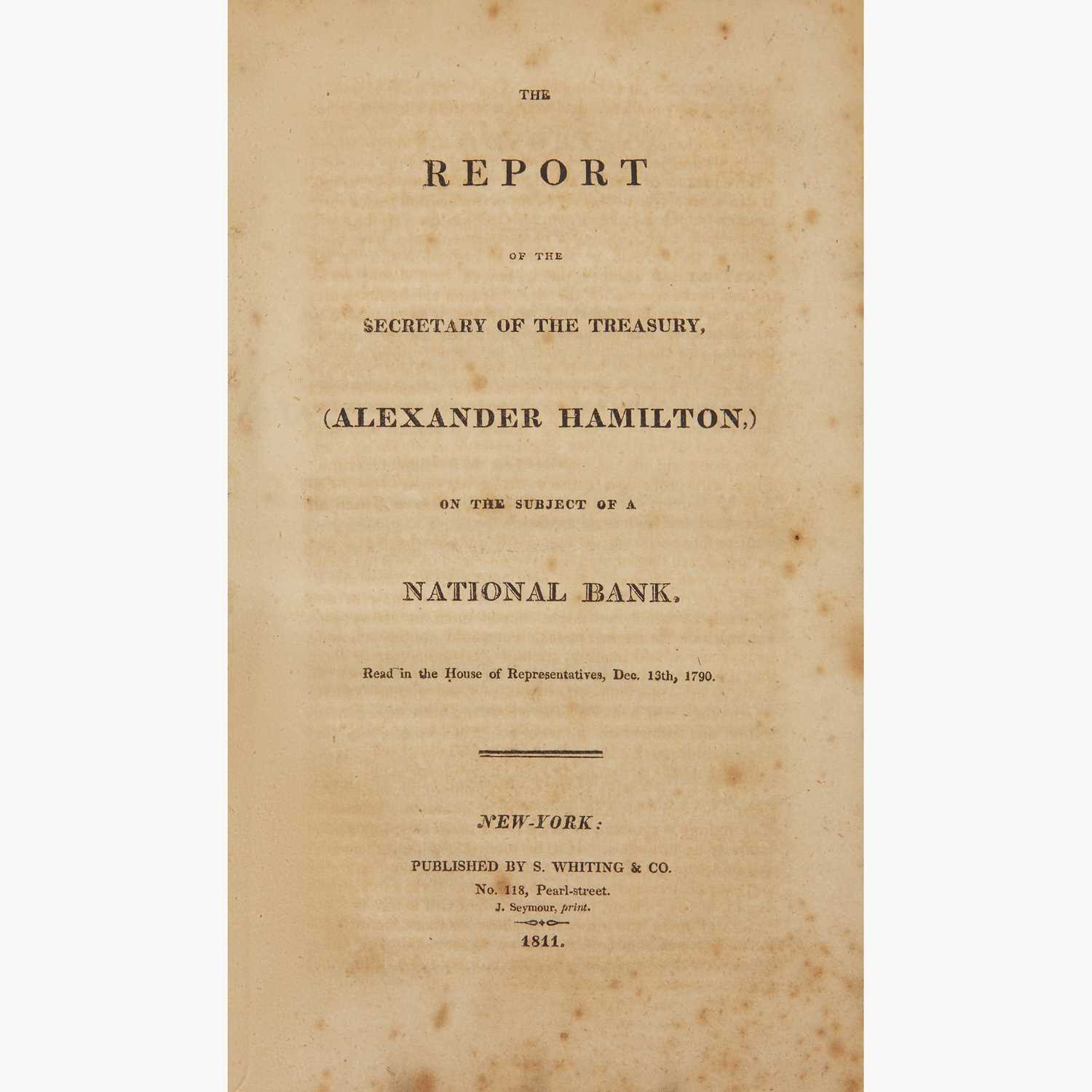
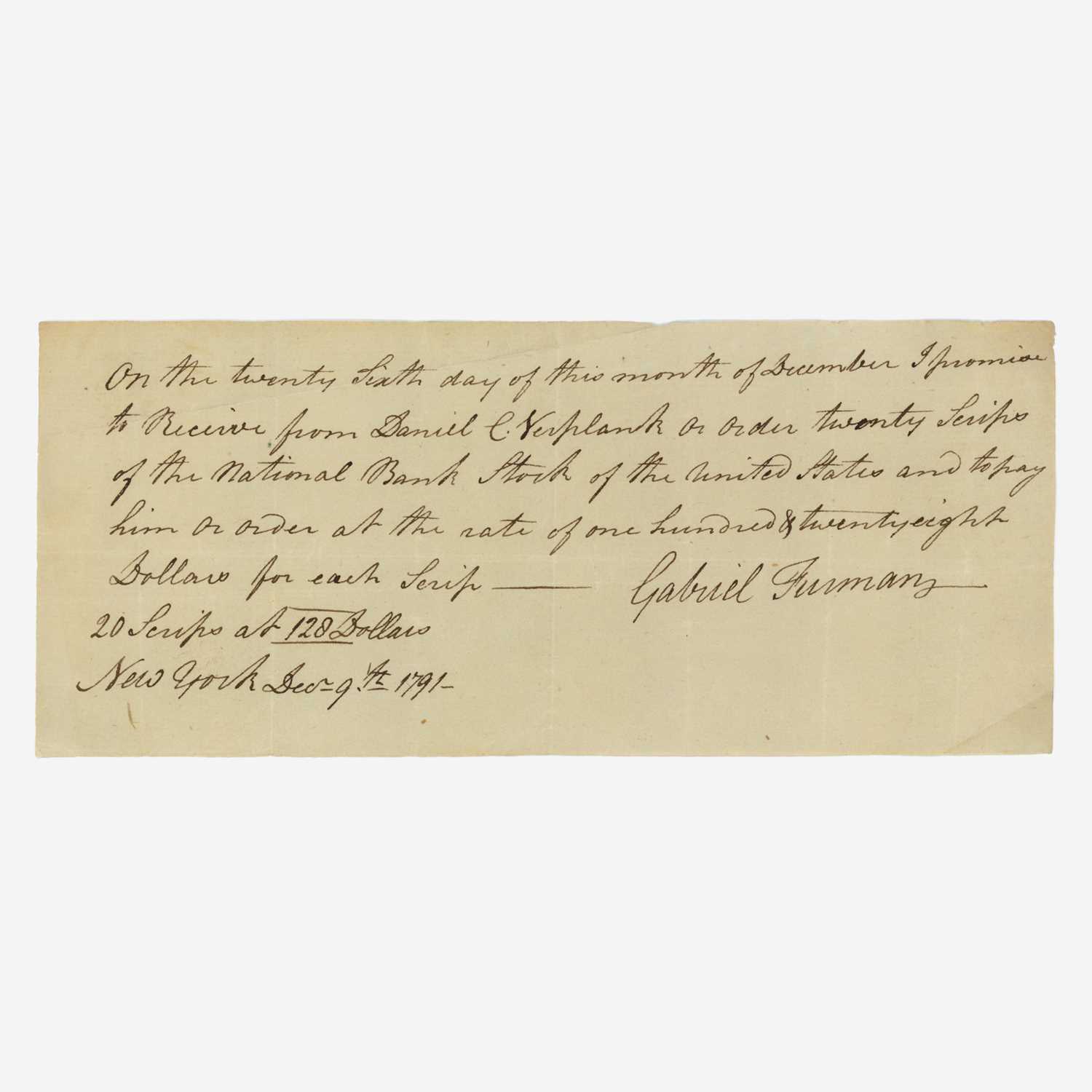

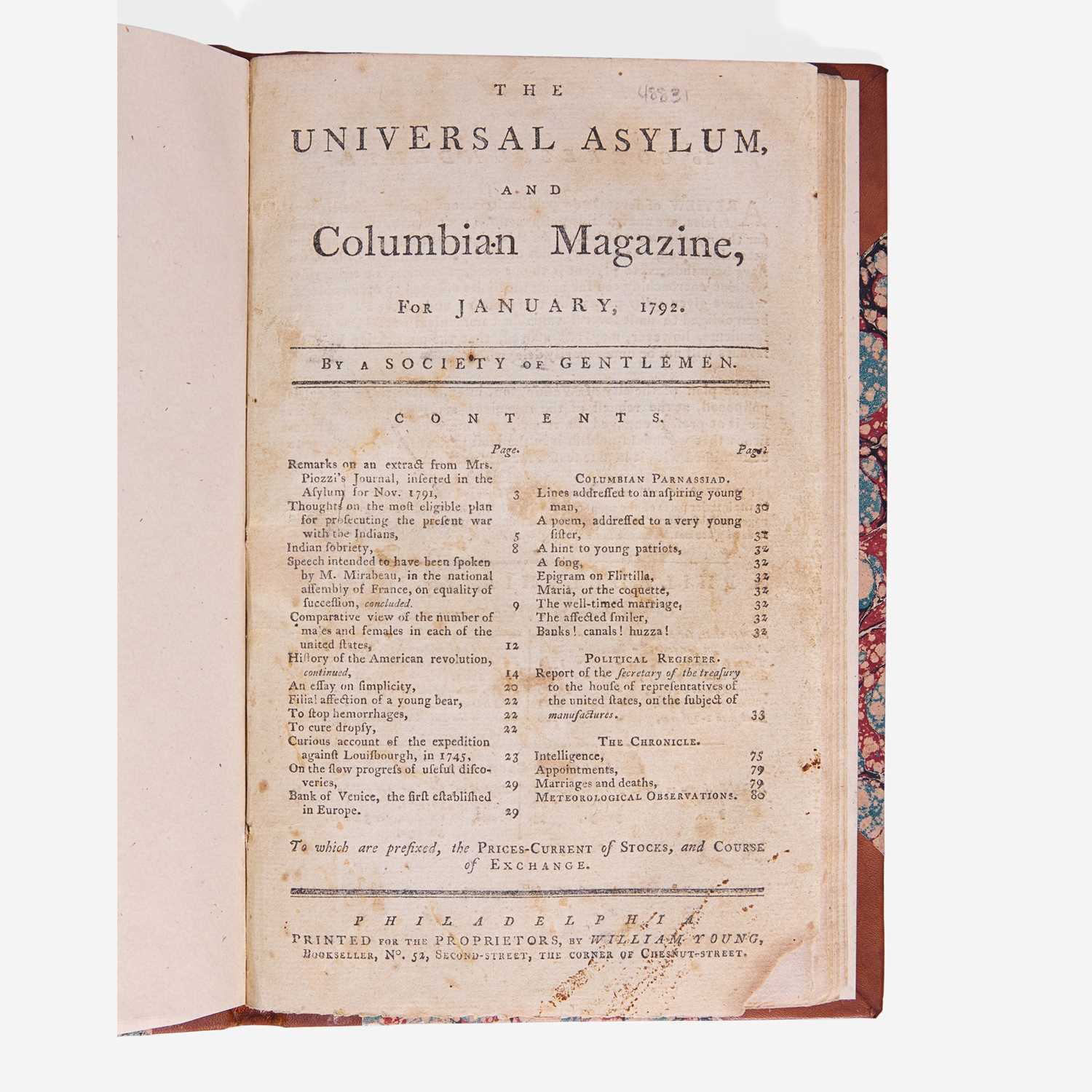

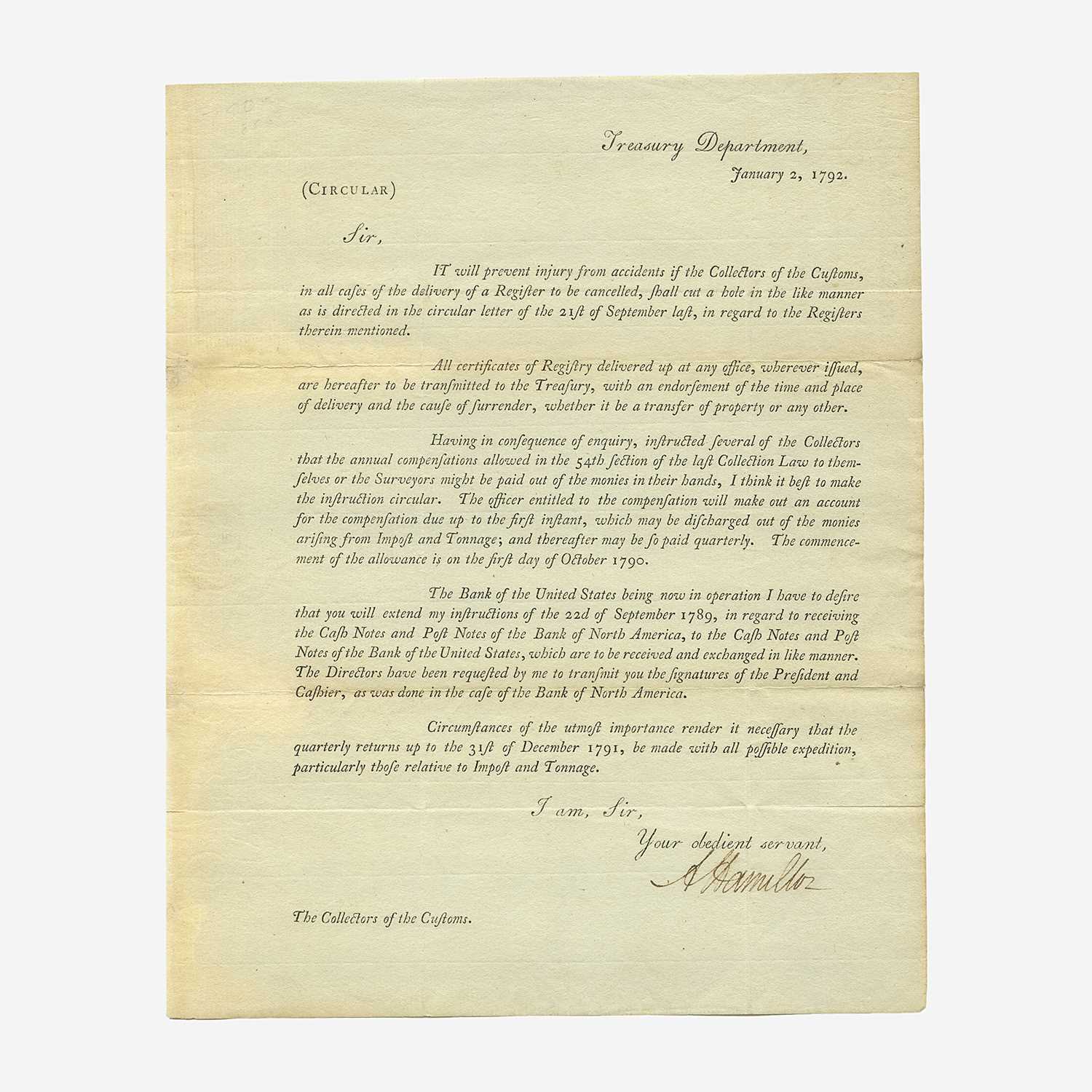
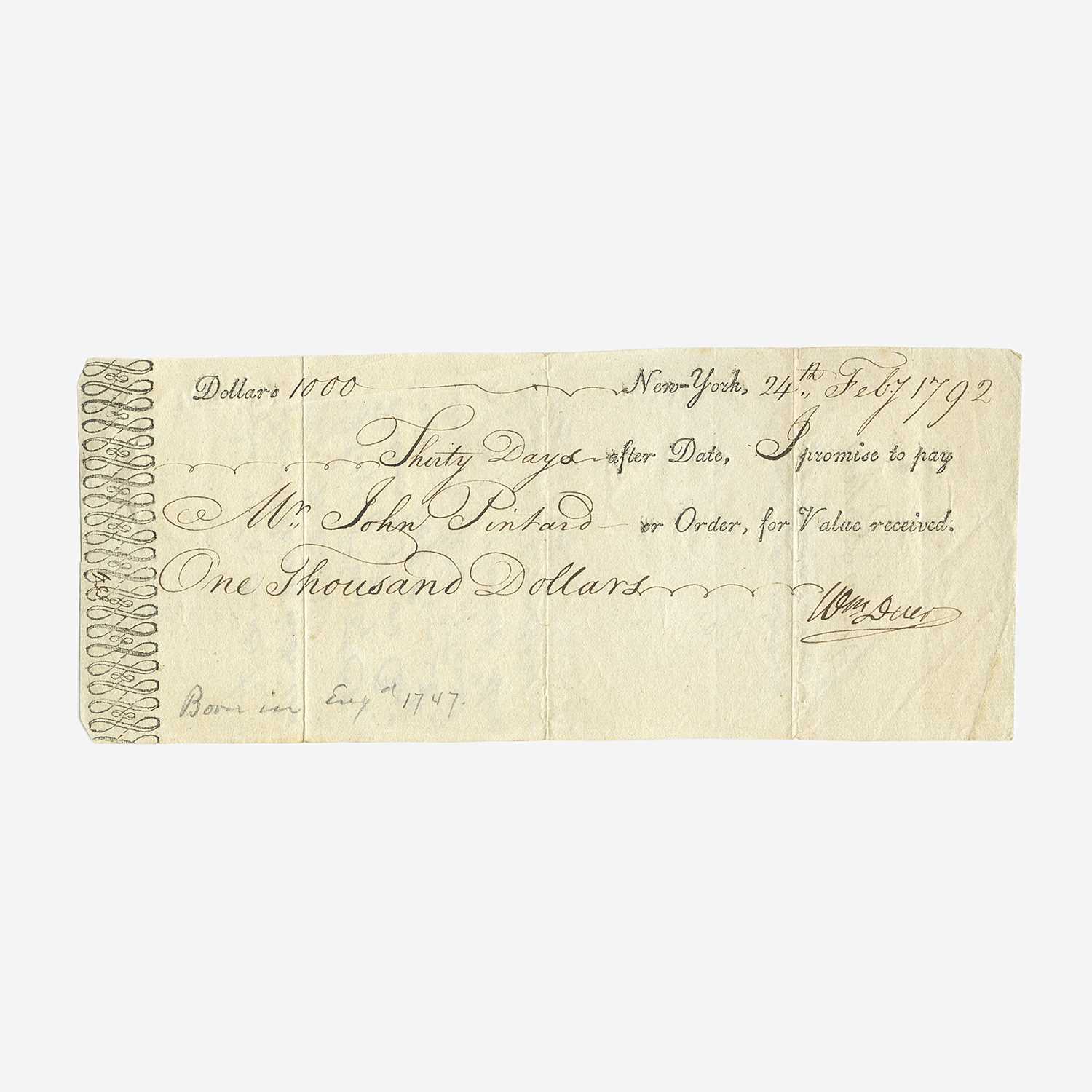
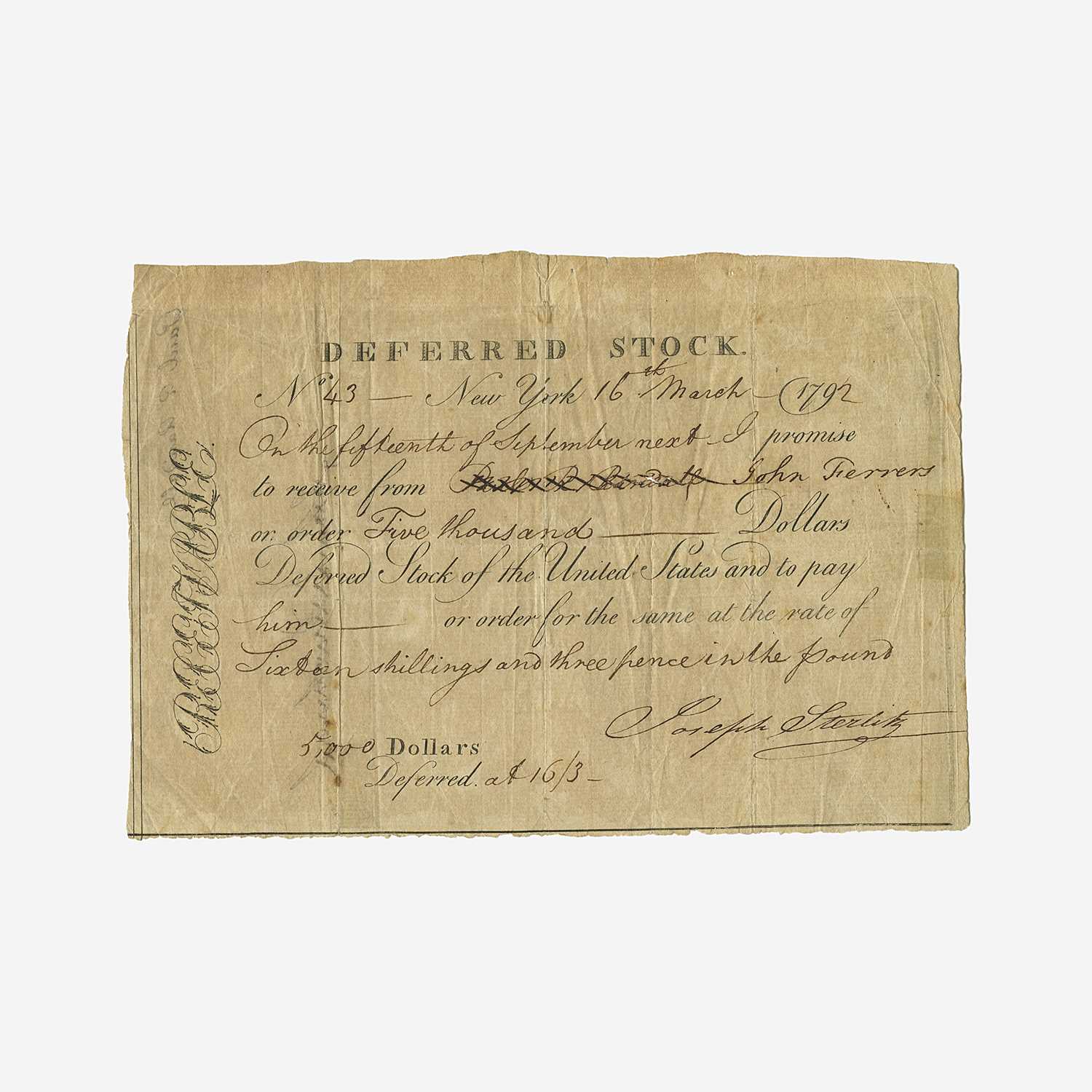
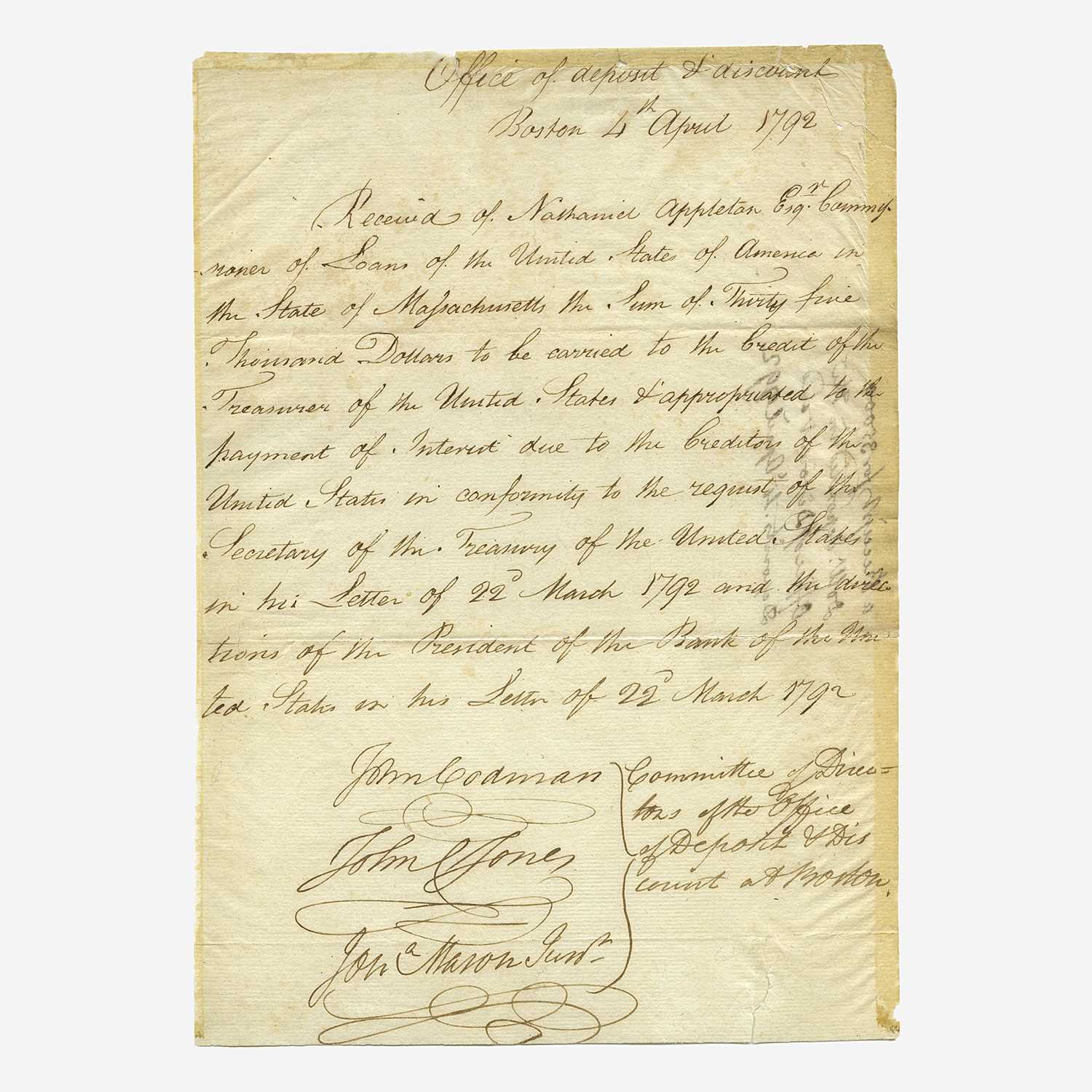
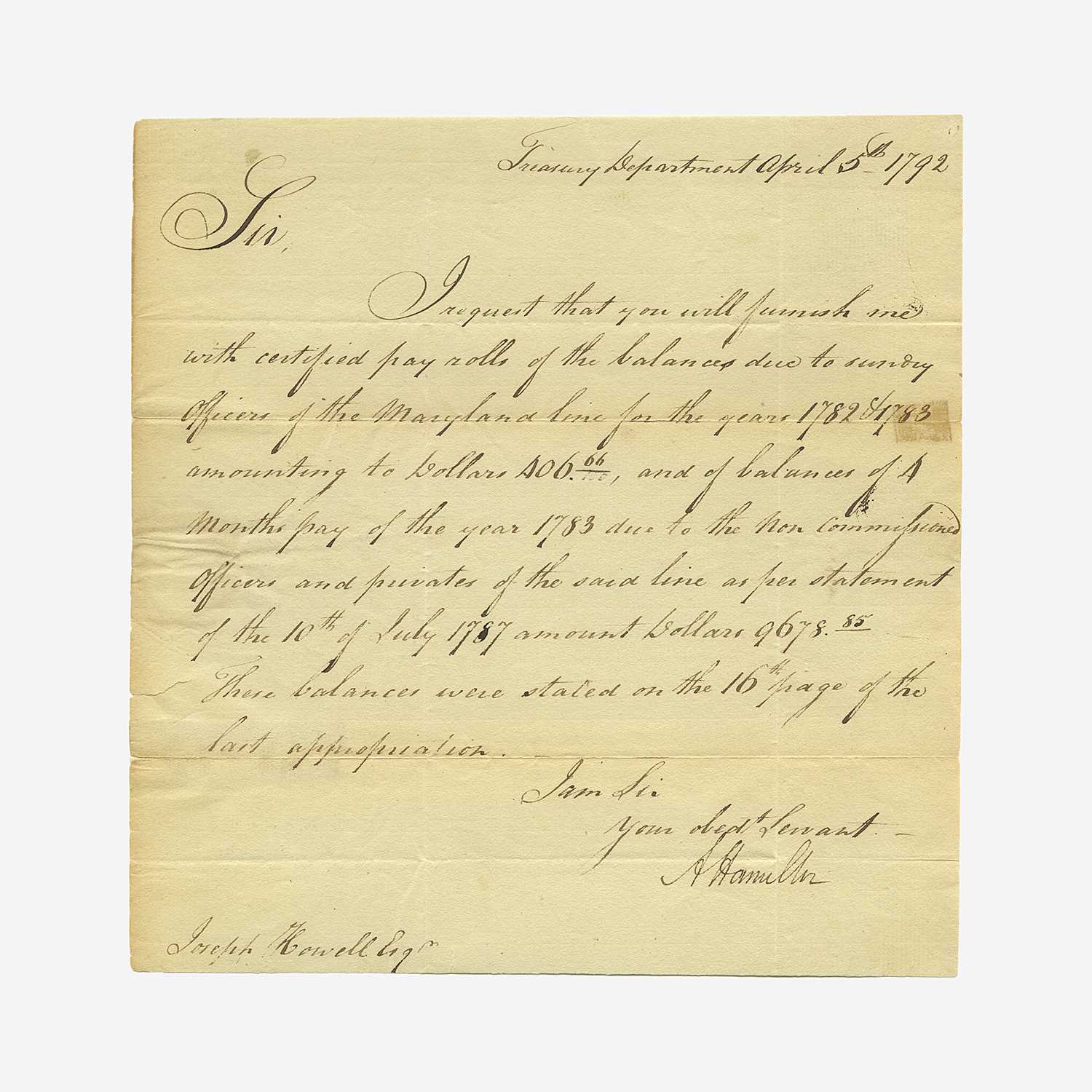
Try LotSearch and its premium features for 7 days - without any costs!
Be notified automatically about new items in upcoming auctions.
Create an alert